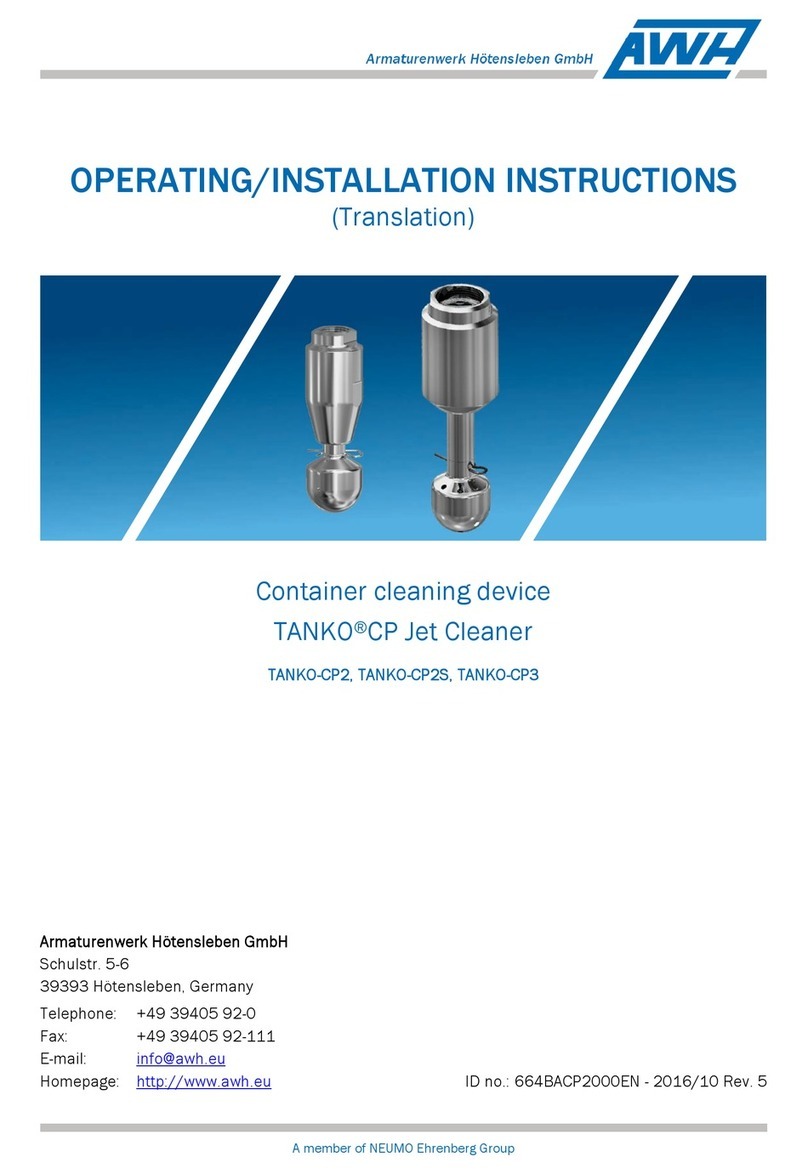
pate cleaner TANKO-CR
Contents Translation-Operating/Installation Instructions 2019/09 I
Contents
Contents ............................................................................................................................................ I
List of Figures .................................................................................................................................. III
List of Tables.................................................................................................................................... III
Abbreviations and Units ................................................................................................................... IV
1 Introduction .................................................................................................................................. 1
1.1 Means of Presentation ............................................................................................................... 1
1.1.1 Explanation of ignal Words............................................................................................ 1
1.1.2 Explanation of the Warnings ........................................................................................... 2
1.1.3 Pictograms and ymbols ................................................................................................. 3
1.2 Warranty and Liability ................................................................................................................. 4
1.3 Product Names and Trademarks ............................................................................................... 4
1.4 Related Documents .................................................................................................................... 4
2 afety ............................................................................................................................................ 5
2.1 Intended Use ............................................................................................................................... 6
2.2 Repairs ........................................................................................................................................ 8
2.3 Duties of the Operating Company ............................................................................................. 8
2.4 Requirements for Personnel .................................................................................................... 11
2.4.1 Personal Protective Equipment ..................................................................................... 12
2.5 Labeling ..................................................................................................................................... 13
2.5.1 Type Designation ............................................................................................................ 13
2.5.2 Type Plate ....................................................................................................................... 13
3 Construction and Function ......................................................................................................... 14
3.1 tructure ................................................................................................................................... 14
3.2 General Function Description .................................................................................................. 14
3.3 Technical Data .......................................................................................................................... 15
3.4 Cleaning media ......................................................................................................................... 16
4 Transportation and torage........................................................................................................ 19
4.1 Packaging .................................................................................................................................. 20
4.2 Transport ................................................................................................................................... 20
4.3 torage ...................................................................................................................................... 21
5 Installation .................................................................................................................................. 22
5.1 afety Instructions for Installation .......................................................................................... 22
5.2 Installation ................................................................................................................................ 24
5.2.1 Interfaces ........................................................................................................................ 25
5.2.2 Installation Position ....................................................................................................... 26
5.2.3 Installing the Device ...................................................................................................... 27
6 Commissioning ........................................................................................................................... 28
6.1 afety Notes for Commissioning ............................................................................................. 28
6.2 Functional Check / Trial Run ................................................................................................... 30
6.3 witch-on procedure................................................................................................................. 31
































